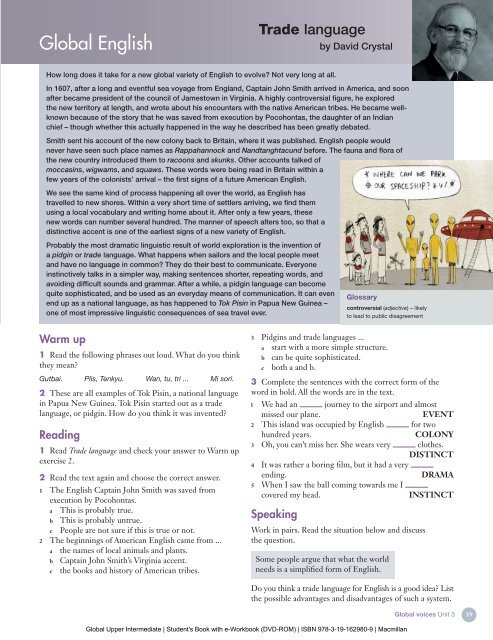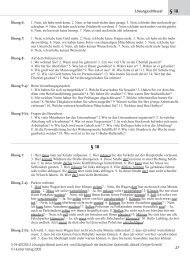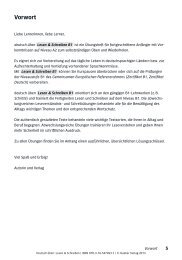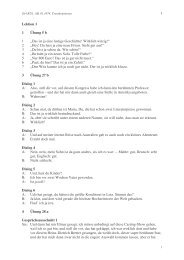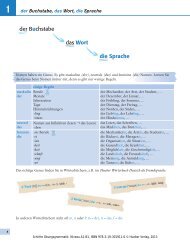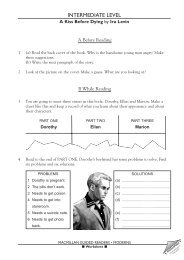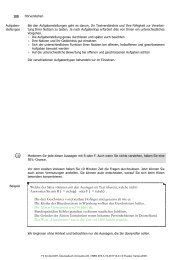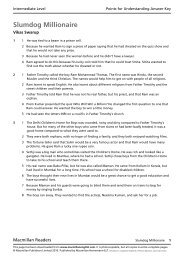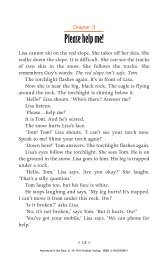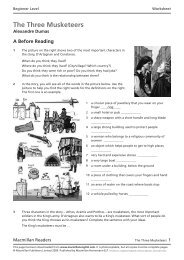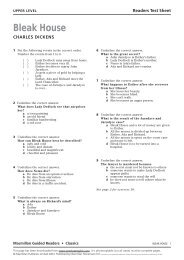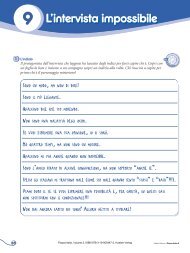ISBN 978-3-19-162980-9 | Macmillan
ISBN 978-3-19-162980-9 | Macmillan
ISBN 978-3-19-162980-9 | Macmillan
- No tags were found...
You also want an ePaper? Increase the reach of your titles
YUMPU automatically turns print PDFs into web optimized ePapers that Google loves.
Global EnglishTrade languageby David CrystalHow long does it take for a new global variety of English to evolve? Not very long at all.In 1607, after a long and eventful sea voyage from England, Captain John Smith arrived in America, and soonafter became president of the council of Jamestown in Virginia. A highly controversial figure, he exploredthe new territory at length, and wrote about his encounters with the native American tribes. He became wellknownbecause of the story that he was saved from execution by Pocohontas, the daughter of an Indianchief – though whether this actually happened in the way he described has been greatly debated.Smith sent his account of the new colony back to Britain, where it was published. English people wouldnever have seen such place names as Rappahannock and Nandtanghtacund before. The fauna and flora ofthe new country introduced them to racoons and skunks. Other accounts talked ofmoccasins, wigwams, and squaws. These words were being read in Britain within afew years of the colonists’ arrival – the first signs of a future American English.We see the same kind of process happening all over the world, as English hastravelled to new shores. Within a very short time of settlers arriving, we find themusing a local vocabulary and writing home about it. After only a few years, thesenew words can number several hundred. The manner of speech alters too, so that adistinctive accent is one of the earliest signs of a new variety of English.Probably the most dramatic linguistic result of world exploration is the invention ofa pidgin or trade language. What happens when sailors and the local people meetand have no language in common? They do their best to communicate. Everyoneinstinctively talks in a simpler way, making sentences shorter, repeating words, andavoiding difficult sounds and grammar. After a while, a pidgin language can becomequite sophisticated, and be used as an everyday means of communication. It can evenend up as a national language, as has happened to Tok Pisin in Papua New Guinea –one of most impressive linguistic consequences of sea travel ever.Glossarycontroversial (adjective) – likelyto lead to public disagreementWarm up1 Read the following phrases out loud. What do you thinkthey mean?Gutbai. Plis, Tenkyu. Wan, tu, tri ... Mi sori.2 These are all examples of Tok Pisin, a national languagein Papua New Guinea. Tok Pisin started out as a tradelanguage, or pidgin. How do you think it was invented?Reading1 Read Trade language and check your answer to Warm upexercise 2.2 Read the text again and choose the correct answer.1 The English Captain John Smith was saved fromexecution by Pocohontas.a This is probably true.b This is probably untrue.c People are not sure if this is true or not.2 The beginnings of American English came from ...a the names of local animals and plants.b Captain John Smith’s Virginia accent.c the books and history of American tribes.3 Pidgins and trade languages ...a start with a more simple structure.b can be quite sophisticated.c both a and b.3 Complete the sentences with the correct form of theword in bold. All the words are in the text.l We had an journey to the airport and almostmissed our plane.EVENT2 This island was occupied by English for twohundred years.COLONY3 Oh, you can’t miss her. She wears very clothes.DISTINCT4 It was rather a boring film, but it had a veryending.DRAMA5 When I saw the ball coming towards me Icovered my head.INSTINCTSpeakingWork in pairs. Read the situation below and discussthe question.Some people argue that what the worldneeds is a simplified form of English.Do you think a trade language for English is a good idea? Listthe possible advantages and disadvantages of such a system.Global Upper Intermediate | Student's Book with e-Workbook (DVD-ROM) | <strong>ISBN</strong> <strong>978</strong>-3-<strong>19</strong>-<strong>162980</strong>-9 | <strong>Macmillan</strong>Global voices Unit 3 39


